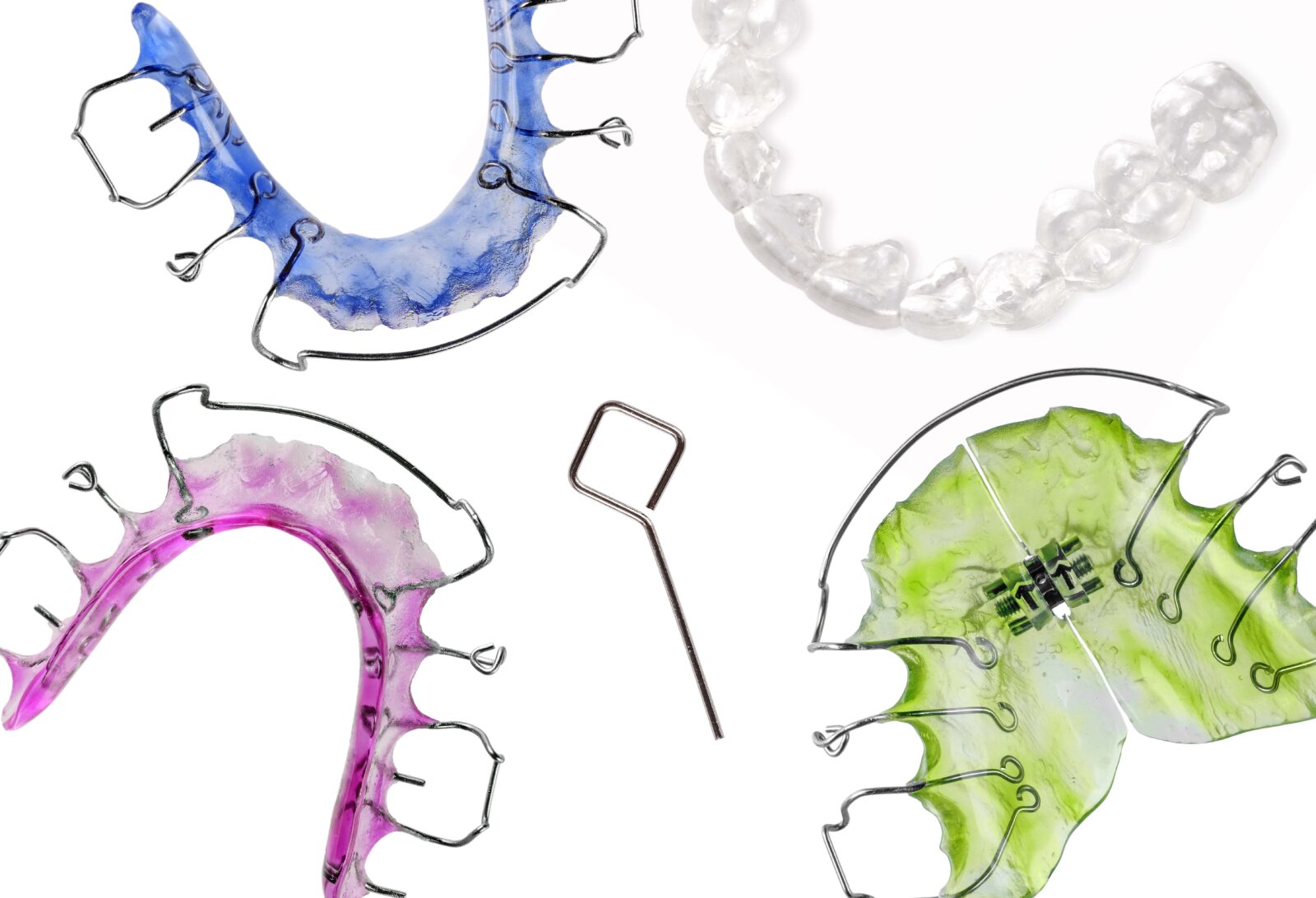Orthodontics is more than just the science of aligning teeth—it’s a transformative discipline that improves both aesthetics and functionality, promoting better oral health and confidence. In the realm of orthodontic treatments, there exists a wide array of appliances, each designed to address specific dental issues. From the traditional metal braces that have corrected smiles for decades to innovative clear aligners offering discreet treatment options, the choices are varied. This blog will explore the different types of orthodontic appliances, detailing their mechanisms, applications, and the scenarios in which they are most effective. Whether you are considering orthodontic treatment for yourself or a loved one, understanding these options will help you make an informed decision on the path to a perfect smile.
Fixed Appliances
Traditional Metal Braces
Traditional metal braces are the most recognized form of orthodontic treatment. They consist of metal brackets attached to the front of the teeth, connected by an archwire which guides the teeth into place. Ligatures, or tiny elastic bands, hold the wire to the brackets. Metal braces are effective for treating a broad range of alignment and spacing issues, making them a popular choice for both children and adults.
Ceramic Braces

Ceramic braces function similarly to traditional metal braces but stand out due to their cosmetic appeal. The brackets are made from a ceramic material that can be colored to match the teeth, making them less noticeable. They are a favored option for patients who seek a more discreet solution without sacrificing the effectiveness of traditional braces.
Lingual Braces
Lingual braces offer the ultimate in orthodontic discretion. Unlike traditional braces, these are placed on the backs of the teeth, hiding them from view. Lingual braces are custom-made to fit each tooth. While effective for most types of corrections, they can be more challenging to clean and might be uncomfortable at first due to their proximity to the tongue.
Self-Ligating Braces
Self-ligating braces resemble traditional braces in their structure but eliminate the need for elastics. Instead, they use a specialized clip in place of ligatures to hold the archwire. This clip helps to reduce the amount of pressure being placed on the tooth and requires fewer adjustments because the teeth can move into place more freely. Patients often experience shorter appointment times and a decrease in overall discomfort.
Removable Appliances
Clear Aligners (e.g., Invisalign)
Clear aligners, like Invisalign, are nearly invisible trays that fit snugly over the teeth, gently moving them through a series of carefully planned stages. Unlike traditional braces, these aligners are removable, allowing for easier eating and oral hygiene. They are best suited for adults and teens with mild to moderate alignment issues. The clear, discreet nature of aligners makes them a preferred choice for those who wish to maintain an unaltered appearance.
Retainers

After the active phase of orthodontic treatment, retainers are essential to maintain the results. They can be fixed or removable and are custom-made to fit the patient’s mouth. The most common types include the Hawley retainer, made of metal and acrylic, and clear retainers that resemble aligner trays. Regular use of retainers is crucial to prevent teeth from gradually shifting back to their original position.
Palatal Expanders
For patients who need to widen their upper jaw, a palatal expander can be used. This device applies gradual pressure to the upper molars each time an adjustment is made, typically by turning a screw in the center of the expander. Palatal expanders are most effective in children and adolescents, as their jaws are still developing and respond well to adjustments.
Specialized Appliances
Headgear
Orthodontic headgear is a type of appliance used to correct more severe bite discrepancies, typically involving the jaw rather than just the teeth. It is often used when extra force is needed that cannot be delivered by braces alone. Types of headgear include cervical pull, high-pull, and reverse-pull, each targeting different needs and facial structures.

Space Maintainers
When a child loses a baby tooth prematurely, a space maintainer can be used to keep the space open until the permanent tooth erupts. This appliance helps prevent neighboring teeth from drifting into the space and causing alignment problems. Space maintainers can be either fixed or removable and are custom-made to fit comfortably within the child’s mouth.
Jaw Repositioning Appliances
Also known as splints or bite plates, these appliances are used to correct jaw position and alleviate symptoms associated with TMJ disorders or other jaw-related issues. They help to reposition the lower jaw, improving the bite and reducing stress on the TMJ. Jaw repositioning appliances are typically used as part of a comprehensive treatment plan involving other therapies or adjustments.
Each of these appliances plays a crucial role in the field of orthodontics, tailored to address specific dental issues effectively. Through the careful selection and application of these devices, orthodontists can achieve desired outcomes, enhancing both function and appearance of their patients’ smiles.
Conclusion
Choosing the right orthodontic appliance is a pivotal decision that can significantly affect both the aesthetic and functional outcomes of dental treatment. As we’ve explored various types of appliances, from traditional braces to innovative clear aligners and specialized devices for complex needs, it becomes clear that modern orthodontics offers solutions for virtually every scenario. Consulting with a qualified orthodontic specialist is crucial to determine the most appropriate treatment plan tailored to your unique dental profile. Embracing orthodontic treatment not only enhances your smile but also contributes to long-term oral health and well-being. Remember, a healthier, well-aligned smile is within reach, and the journey begins with understanding and choosing the right appliance for your needs.




